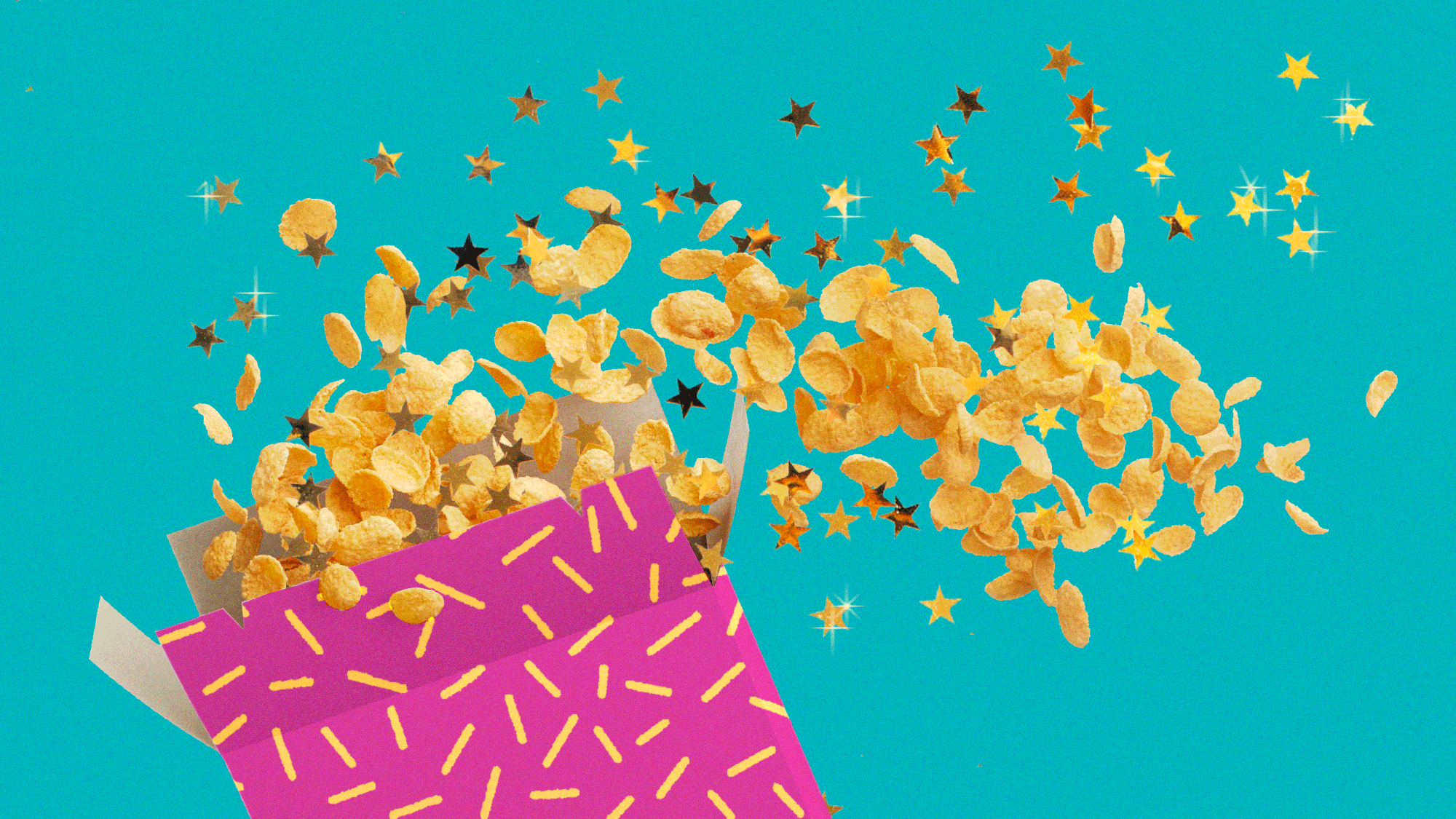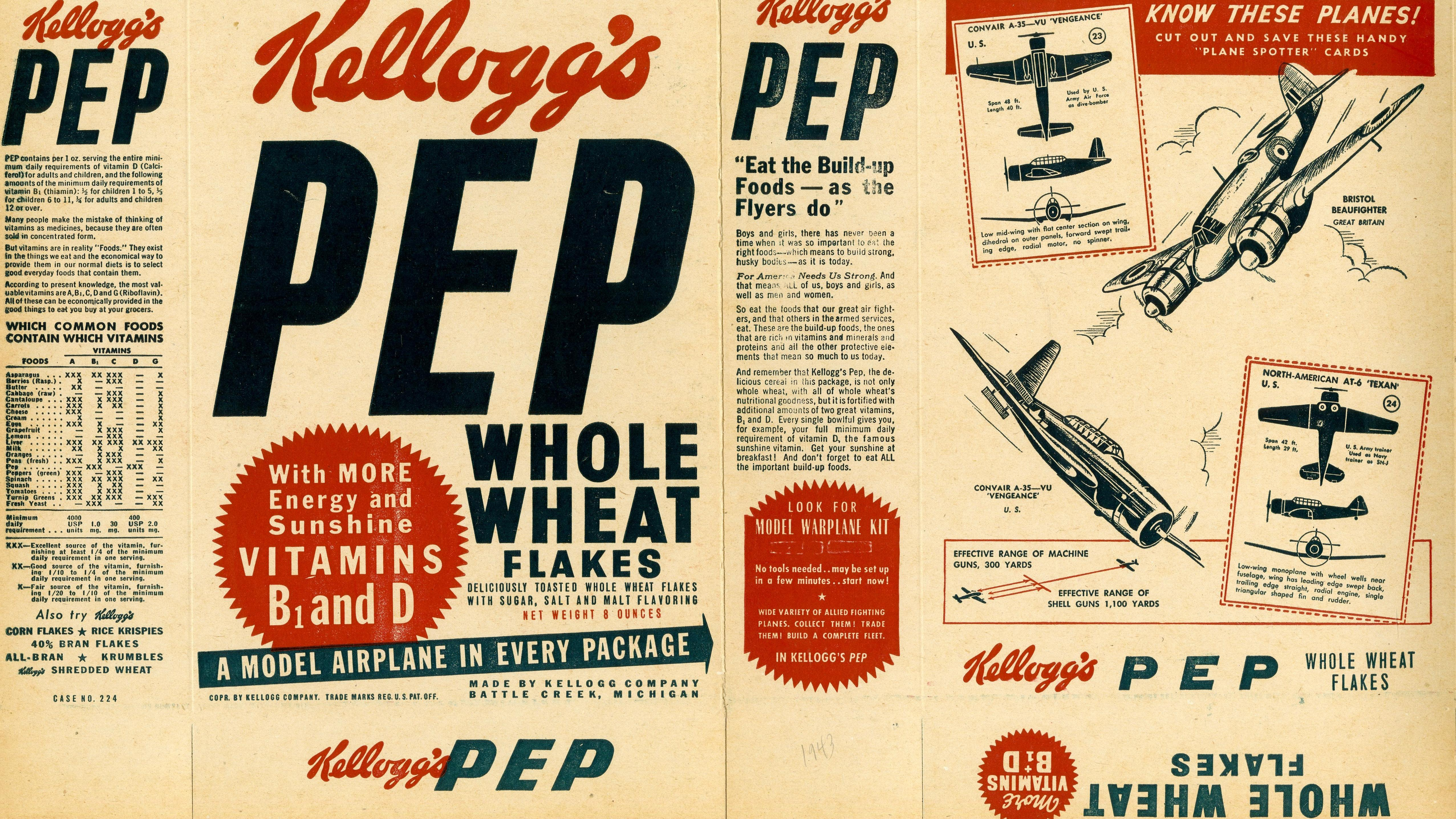How Cereal Box Prizes Grew Up With Us
Do you remember your favorite cereal box toy? What happened to it?
My curiosity for the inner workings of major cereal companies knows no bounds. You might even call me a cereal detective. First I uncovered the mysteries of the Box Tops for Education program. My next investigation: cereal box prizes. I can't remember the last time I felt the excitement of pouring a little plastic treasure into my bowl.
Whether it was a magical spoon that changed color when you put it in milk or an entire computer game on CD-ROM, half the fun of plowing through a bowl of sugary-ass cereal was the possibility of scoring that prize inside. Some kids (I will neither confirm nor deny that this applied to me) couldn't even wait for the prize to fall out of the box and instead jammed their grubby little hands into the cereal just to fish out the toy.
The prizes themselves have been hit or miss over the years. "My wacky wall walkers never worked and I was bitterly disappointed," former associate editor at The Takeout Aimee Levitt recalls. For anyone unfamiliar with a "wacky wall walker," in the early 1980s, Apple Jacks cereal included a rubbery, squid-looking toy in every box that could be thrown at walls and slowly "crawl" down to the ground as it stuck and unstuck itself. Others polled on Twitter reminisced about Lion King–themed color-changing spoons and Teenage Mutant Ninja Turtles bowls as some of their favorites. One respondent even confirmed he still has his 1960s Raisin Bran baseball cards.
From sticky toys and baseball cards to magic spoons and video games, these beloved childhood memories have stuck with us, at times helping to cement important moments in history, even as they have evolved—and in some cases disappeared from cereal boxes altogether.
Stick that in your Corn Flakes and eat it
Each of the largest cereal brands in the country—Kellogg's, General Mills, and Post—played major roles in the introduction and evolution of cereal box prizes. Many credit Kellogg's as the first to place prizes in cereal boxes, but the brand does not confirm this attribution. Natasha Bruns, corporate archivist for General Mills, noted via email that General Mills' history with premiums (that's business speak for "prizes") can be traced back to the 1880s when a premium was offered along with Gold Medal flour and eventually with Wheaties cereal in 1931. Back then the prizes were mail-away coupons that could be redeemed for a Wm. Rogers & Son (Oneida) teaspoon.
Thanks to some history notes provided by Kellogg's in an email, we know the company's first cereal "premium" offered was The Funny Jungleland Moving Picture Book, given to customers in stores if they purchased two boxes of Corn Flakes in 1910. Sort of like an early version of a choose-your-own-adventure story, the book featured horizontally sliced flaps that could be flipped in multiple directions to create different-looking characters and storylines. It wasn't until 1943 that Kellogg's placed a model airplane into a package of its Pep Whole Wheat Flakes cereal. (Pep was Kellogg's first cereal to be fortified with vitamins B and D in 1938.)
In the 1920s, cereal companies turned to then-popular radio shows to advertise their premiums. Malt-O-Meal, a quick-cooking hot cereal, sponsored a radio show called Steamboat Bill, explains Claudine Patel, chief marketing officer at Post Consumer Brands. As a promotion, the title character asked kids to send in Malt-O-Meal cereal box tops and jokes to him. If a kid's joke was shared on-air, they would get a toy steamboat. Eventually, as part of that same campaign, the brand offered small steamboat whistles as prizes directly inside the boxes.
Duane Dimock, an avid cereal box collector since the early 1970s whose current collection sits at just over 10,000 boxes (thousands of cereal toys included), considers this shift to putting prizes in the box a crucial move.
"It was brilliant," Dimock says. "You put it in the bottom of the box and the kid has to eat all the cereal to get to it. And then when he finds his prize he's like, 'I'm really happy—oh, I'm out of cereal...' It was just genius."
The evolution of cereal promotions provides a very specific lens into history over time. "I love the reflection of society with the graphics from that era," Dimock says. "You can go back and look at history, you can see the reflection."
This is also evident in the toys themselves as well. Bruns says that in the 1940s and '50s, transportation was a common theme, with metal or plastic cut-out planes, cut-out trains, and license plates included in General Mills offerings. One of Dimock's favorite cereal prizes, an atomic bomb ring found in a box of Kix Cereal in the 1940s, perfectly illustrates the historical context these items reflect. It debuted in the WWII/postwar era when the power of atomic energy captivated U.S. leaders and the public. (This would be a fantastic way to teach a history class: milestone events as told through cereal box prizes.)

The digital age strikes again
Fast forward some decades and cereal box prizes continue to keep up with the times. In 2005, consumers could download a free cell phone ringtone through a Reese's Puffs cereal promotion, and the following year boxes of Lucky Charms came with a free Apple iTunes download, wrote Bruns. Now, on-pack QR codes are offered to give customers access to games and other online promotions.
These premiums can be just as effective as the plastic toys. Dan Goubert, a self-described cereal journalist and co-host of The Empty Bowl, a "meditative podcast" about cereal, says his love for cereal can be traced back to 1997's Chex Quest, a video game found in Chex cereal. Bruns noted this offering was the first time that a video game was used as a promotion, and more than 5 million copies were distributed.
Whether or not these digital developments have been positive depends on who you're asking. The true cereal enthusiasts I spoke with are skeptical about the evolution and future of prizes compared to the good old days. "The landscape of cereal box prizes is not nearly as expansive or creative as it used to be," said Goubert.
Anyone looking for a more retro cereal toy may need to dive into the collector community. David Gutterman, owner of Quake Collectibles in Chicago (a store named specifically after the Quaker Oats cereal with the same name), confirms that interest in the vintage stuff remains: "Every so often people will want something from the '80s like a Pac-Man or a Donkey Kong," he says. When it comes to today's cereal prize scene, Gutterman theorizes that the decline in in-box prizes has to do with health and safety standards, i.e. potential choking hazards.
With the recent pandemic-induced focus on keeping everything sanitized, it's understandable that cereal companies might move away from promotions that would tempt kids to stick their bare hand in a box. Much like hiding an engagement ring in a dessert (fun idea, bad execution), the surprise factor has some risks to it.
Goubert optimistically called out General Mills' recent promotion as a successful example of how in-box cereal prizes can work today. For Halloween, the brand offered a traditional in-pack prize with "spooky" figurines of well-known characters like Count Chocula, Boo Berry, and Franken Berry.
"Having something people can compare with others and post about how excited they are they found something extremely rare...I think rarity and obscurity gives certain cereal box prizes an edge over the others," Goubert says.
Prizes come and go, but a lot of these brands stay the same. "As I walk down the cereal box aisle it almost looks like you could just walk down 40 years ago," says Gutterman. "It still looks almost the same as it has forever."
In the end, prizes in cereal haven't necessarily disappeared but instead have grown up with us.

